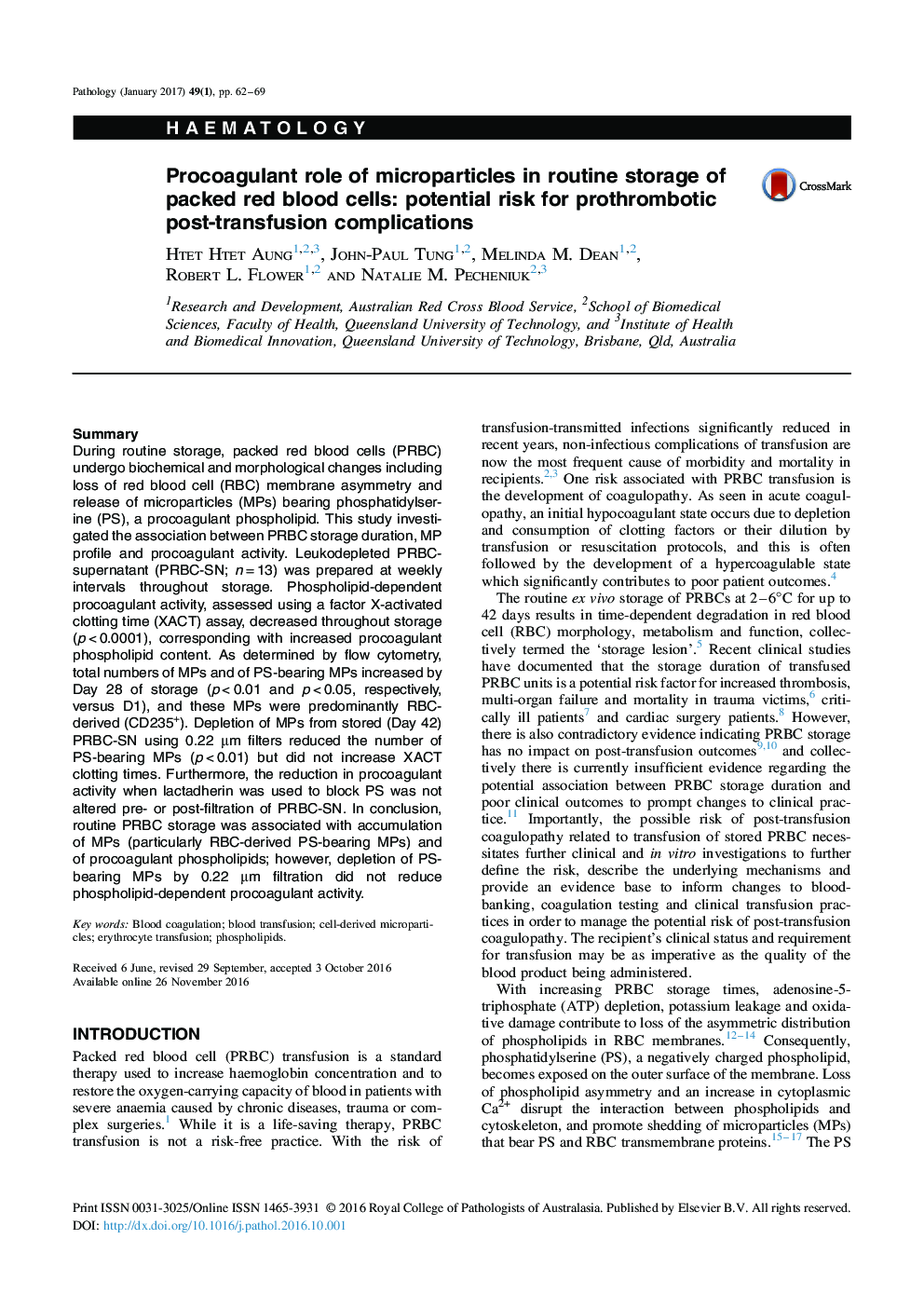| Article ID | Journal | Published Year | Pages | File Type |
|---|---|---|---|---|
| 4761134 | Pathology | 2017 | 8 Pages |
SummaryDuring routine storage, packed red blood cells (PRBC) undergo biochemical and morphological changes including loss of red blood cell (RBC) membrane asymmetry and release of microparticles (MPs) bearing phosphatidylserine (PS), a procoagulant phospholipid. This study investigated the association between PRBC storage duration, MP profile and procoagulant activity. Leukodepleted PRBC-supernatant (PRBC-SN; n = 13) was prepared at weekly intervals throughout storage. Phospholipid-dependent procoagulant activity, assessed using a factor X-activated clotting time (XACT) assay, decreased throughout storage (p < 0.0001), corresponding with increased procoagulant phospholipid content. As determined by flow cytometry, total numbers of MPs and of PS-bearing MPs increased by Day 28 of storage (p < 0.01 and p < 0.05, respectively, versus D1), and these MPs were predominantly RBC-derived (CD235+). Depletion of MPs from stored (Day 42) PRBC-SN using 0.22 μm filters reduced the number of PS-bearing MPs (p < 0.01) but did not increase XACT clotting times. Furthermore, the reduction in procoagulant activity when lactadherin was used to block PS was not altered pre- or post-filtration of PRBC-SN. In conclusion, routine PRBC storage was associated with accumulation of MPs (particularly RBC-derived PS-bearing MPs) and of procoagulant phospholipids; however, depletion of PS-bearing MPs by 0.22 μm filtration did not reduce phospholipid-dependent procoagulant activity.
